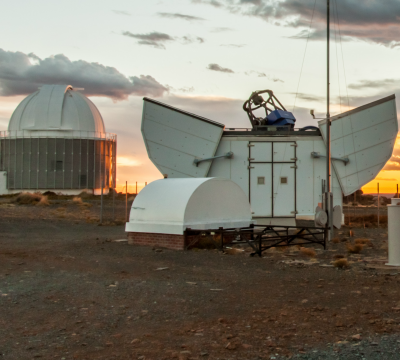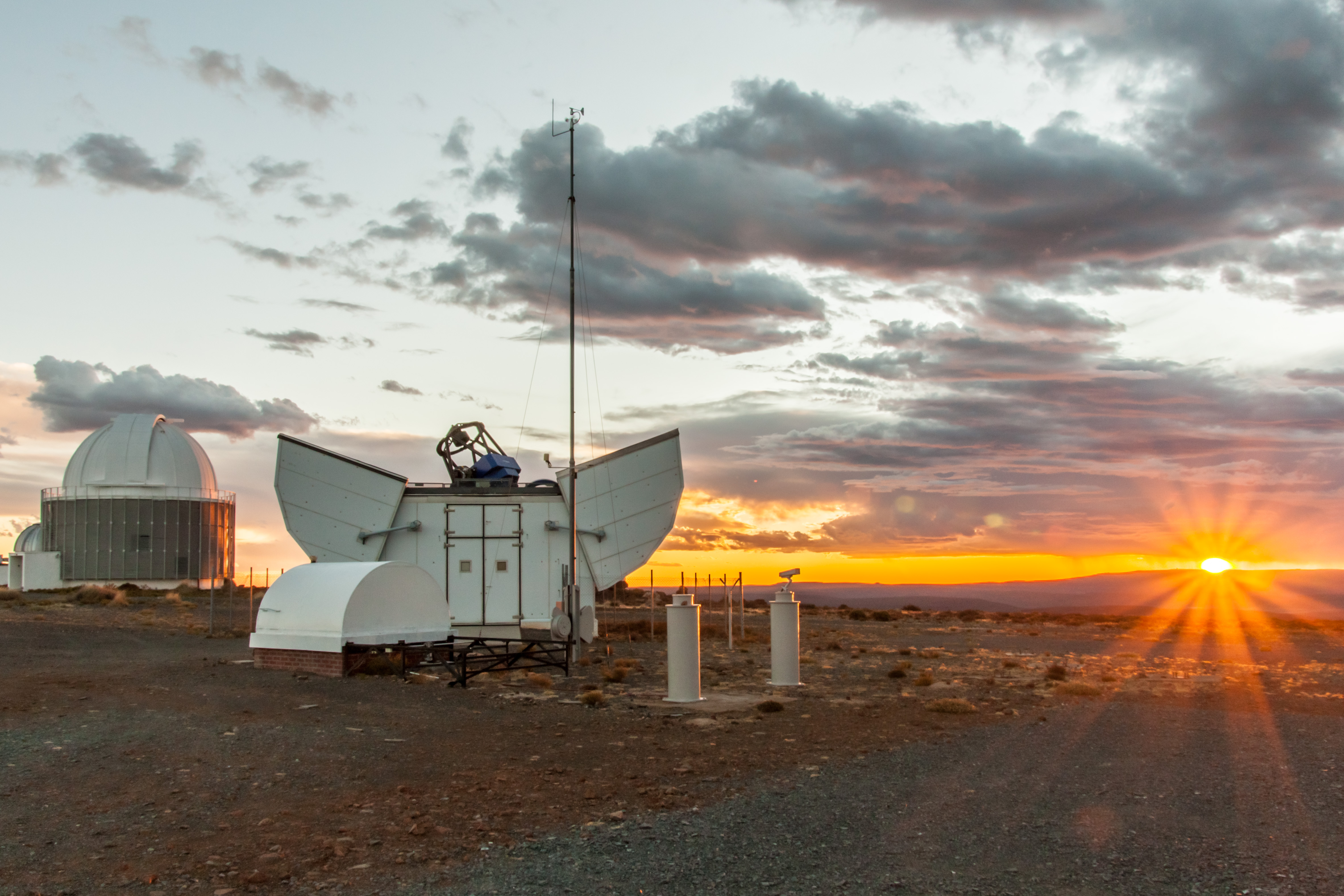
19 Sep Twinkle, twinkle little star
Measuring the twinkling of the stars…
Image credit: Dr Tim-Oliver Husser. The closed ox-wagon encases the massdimm telescope, which has the sole task of measuring the twinkling of the stars.
The more scientific term for twinkling, and the one you’ll hear people at the Observatory referring to, is “the seeing”. The latter is caused by disturbances in the atmosphere, and the more turbulent it is, the more stars will appear to twinkle, the worse “the seeing” will be. For the purposes of astronomy, the more stable the atmosphere is, the better the science will be.
When the object you’re looking at, like a star, is being subjected to bad seeing, it will look much bigger and fluffier than it actually is. Think of a hosepipe where you can adjust the water setting: if you have it set to a fine misty spray, the water is scattered in a wide arc. When you have it set to a single jet of water, it sprays in a direct stream to the point you’re aiming. Similarly, when the seeing is good the starlight is arriving in a direct stream and more can be collected, therefore better quality science can be achieved.
Don’t twinkle, please don’t twinkle, little star…



